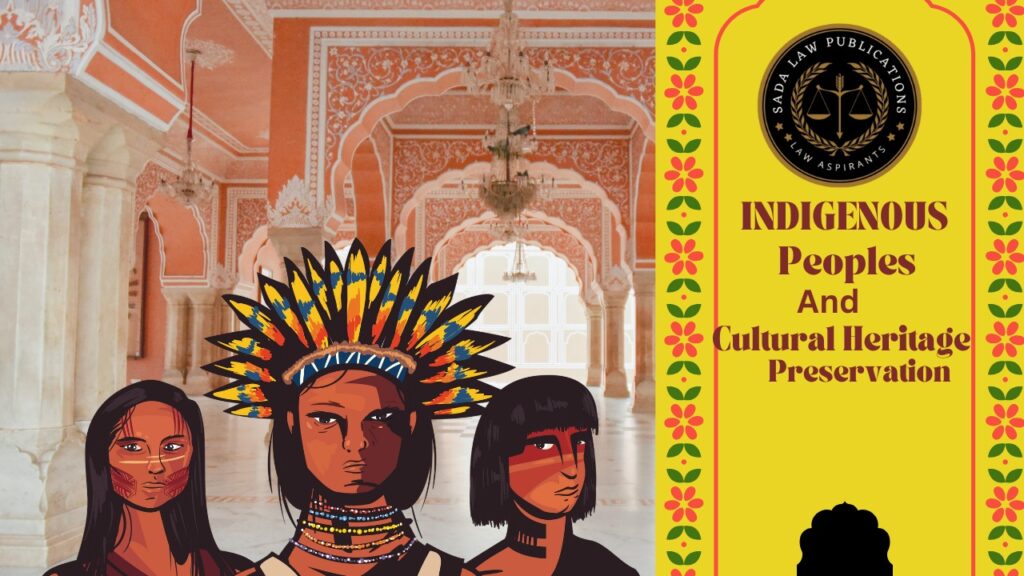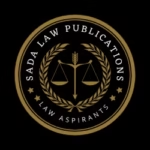Indigenous Peoples’ Rights and Cultural Heritage Preservation
22 jan 2025

1. Introduction
The indigenous peoples of the world, with their innumerable cultures and diversities of life, history, and traditions, form a significant part of the cultural mosaic. Their rights and cultural heritage have always been major concerns regarding threats from various fronts: colonization, modernity, and environmental degradation. Preserving the cultural heritage of indigenous communities, while at the same time upholding their rights, is indeed an extremely complex issue with intricate details. This essay discusses the legal frameworks, international agreements, and challenges correlated with indigenous peoples’ rights to cultural heritage preservation. It reflects on the role of international law, challenges brought about by modern challenges, and the need to preserve the indigenous cultural heritage for future generations.
2. Historical Context and Legal Framework
The history of indigenous peoples worldwide is scared by colonization, marginalization, and suppression of their cultural heritage. Land was taken away as the colonial masters introduced their sets of laws and delved into disregard for laws and customs of people indigenous to them. For example, the colonization of the Europeans in America saw many indigenous communities displaced and cultures decimated. The colonization of the British in Australia led to the near extinction of languages and cultural practices amongst Aborigines.
3. International Legal Frameworks
Several international legal regimes have been elaborated, responding to historical injustices for the protection of the rights of indigenous people to their cultural heritage. Core documents include:
a. United Nations Declaration on the Rights of Indigenous Peoples (UNDRIP)
Adopted by the United Nations General Assembly in 2007, UNDRIP represents the milestone in recognizing indigenous peoples’ rights. The UNDRIP enumerates the collective rights of indigenous peoples to self-government, land, culture, and involvement in decision-making processes. The UNDRIP attaches a great deal of importance to the preservation of indigenous cultural heritage and lays down that indigenous peoples are in control over traditional knowledge and practices.
b. Convention on Biological Diversity (CBD)
The CBD, signed in 1992, is an acknowledgment that traditional knowledge and practices are significant in biodiversity conservation. It encourages active participation of indigenous peoples in management and protection within their respective traditional lands and knowledge. The Nagoya Protocol to the CBD, adopted in 2010, provides a legal framework aimed at the fair and equitable sharing of benefits arising from the utilization of genetic resources and traditional knowledge.
c. International Labour Organization Convention No. 169
Adopted in 1989, ILO Convention No. 169 is a comprehensive international instrument that covers a wide range of rights for indigenous and tribal peoples, including issues relating to land, participation in decision-making, and cultural preservation. Convention No. 169 is legally binding upon the ratifying countries and as such provides a legal framework for the protection of indigenous cultural heritage.
d. World Heritage Convention
It was adopted in 1972 and focuses on protection of the cultural and natural heritage of outstanding universal value. Though it does not specifically address the rights of indigenous peoples, many indigenous sites have been recognized within this framework. The Convention encourages the participation of indigenous peoples in the management and conservation at World Heritage sites.
4. Cultural Heritage Protection
a. Importance of Cultural Heritage
Cultural heritage is the ensemble of all traditions, languages, art, rituals, and practices that identify a community. In the case of indigenous people, it is directly linked to their relationship with the land and natural resources. It is crucial in maintaining their social cohesion, historical continuity, and cultural diversity. This heritage needs preservation not only for the communities themselves but for humanity as a whole, for its contribution to global cultural diversity.
5. Challenges on Cultural Heritage
a. Environmental Degradation
The greatest threat to indigenous peoples’ culture is environmental degradation. Deforestation, mining, and industrial agriculture all disrupt the homelands and ecosystems on which people have traditionally relied. Deforestation in the Amazon Rainforest alone has taken not only a toll on the biodiversity in the region but threatened the culture which indigenous communities have with the forest for their livelihoods and spiritual practices.
b. Globalization and Modernity
Globalization and modernity result in the homogenization of cultures and erosion of the traditional practices thereof. The challenges regarding any indigenous culture are that they may be overpowered by Western values and a way of life. They may lose traditional knowledge and practices within such influence. The spread of technology and mass media often converts into cultural assimilation and further marginalizes languages and cultures of indigenous communities.
c. Legal and Political Challenges
The concept of indigenous cultural heritage is often mired in judicial and political tussles. Conflicting rights over land, inadequate legal provisions, and lack or minimal representation in decision-making forums all combine to work against any possibility of preservation. Very often, court cases regarding land ownership and the extraction of resources have placed indigenous cultural sites under threat.
6. International and National Efforts in Preservation International Initiatives
a. UNESCO’s Intangible Cultural Heritage Program
UNESCO’s ICH program was devised to preserve cultural practices and traditions important to communities for their identities. It aids in the identification and preservation of intangible cultural heritage in various ways, one of which includes the Representative List of the Intangible Cultural Heritage of Humanity. A few of the indigenous practices have been included in this list, such as certain traditional dances and rituals, proving their significance and a need for their preservation.
b. Convention for Safeguarding of the Intangible Cultural Heritage
Adopted in 2003, the Convention deals with safeguarding intangible cultural heritage, including oral traditions, performing arts, and traditional knowledge. It emphasizes the role of communities in the preservation process and encourages the establishment of national inventories and safeguarding measures. This Convention provides a framework for protecting indigenous cultural practices from extinction.
7. National Legislation and Policies
a. Australia’s Native Title Act 1993
Australia’s Native Title Act acknowledges the rights of Aboriginal and Torres Strait Islander peoples to their various lands and waters. It provides legal provision for the making of claims on and the protection of native title, assists in the protection of cultural heritage by acknowledging linkage between land and the practice of culture, and has been used to protect many sites and practices that are important to indigenous culture.
b. Indian Forest Rights Act 2006
India’s Forest Rights Act intends to recognize and vest forest rights in forest-dwelling communities, including indigenous peoples. This Act attempts at protecting the cultural and livelihood rights of these communities by recognizing traditional practices and knowledge for the management of forests. It has become an important tool in the protection of indigenous cultural heritage within the context of conservation of forests.
c. The Canadian Indian Act
The Canadian Indian Act, while highly controversial, does contain provisions for the protection of indigenous cultural practices and heritage. Its most recent reforms have focused on increasing indigenous rights recognition and promoting the continuation of cultural traditions. These are indeed works in progress, as will be the efforts in trying to make amends for past injustices and offering better protection for indigenous heritage in Canada.
8. Indigenous Community-Level Activities
Community-Led Initiatives
The indigenous communities themselves remain the biggest guardians for preserving their cultural heritage. Community-driven initiatives of documentation and revitalization are traditionally based on social practices, languages, and knowledge. Among the usual ways that indigenous peoples continue to preserve their culture include language preservation programs, cultural festivals, and workshops about traditional art.
a. Language Revitalization
Language forms part of the cultural heritage that many indigenous communities are putting considerable effort into revitalizing so that their native languages do not go extinct. The communities have undertaken a number of activities, including programs of language education, development of educational materials, and the setting up of immersion schools for languages. For instance, the revival of the Māori language in New Zealand has been promoted through government initiatives and community action, such as the establishment of Māori-medium schools.
b. Cultural Festivals and Arts
Cultural festivals and art forms provide indigenous communities with the avenue to commemorate their culture and share it with the wider world. Many events are filled with traditional performances, crafts, and stories passed down for generations. Other examples include the Festival of Pacific Arts, an event that takes place every four years, which shows all the cultures of the Pacific Islands, and in that process, it helps in the distribution and preservation of culture.
9. Partnerships and Collaboration
A collaboration between indigenous communities, governments, and international organizations is, therefore, a recommended prelude to any cultural heritage preservative effort. Partnerships will avail an opportunity to share knowledge and resources and ensure the dissemination of best practices. In that respect, various collaborations involving UNESCO and other international bodies have assisted indigenous communities in accessing funding and technical support for heritage preservation.
a. UNESCO Collaborations
These are done in partnership with the local indigenous communities to strive for cultural heritage preservation through myriad programs and projects. UNESCO provides technical assistance, capacities, and project financing in the safeguarding of intangible cultural heritage. The indigenous communities often participate in decision-making processes of the UNESCO to ensure that their perspective and needs are put into consideration.
b. Government and NGO Partnerships
National governments and NGOs are also active in the preservation of indigenous peoples’ cultural heritage. While the governments may be likely to provide funding, legal protections, and infrastructures towards heritage projects, NGOs tend to provide support through much-needed advocacy, research, and community assistance. For example, the WWF works in collaboration with indigenous peoples for land management practices that are in line with the preservation of cultural heritage.
10. Case Studies
a. The Māori of New Zealand
For New Zealand’s Māori, there are efforts both legally and within the community that have been going on to keep the culture alive. The Treaty of Waitangi is a founding document signed in the year 1840, guaranteeing Māori rights and interests. More recently, legal reform and government policies have tried to provide recognition for Māori customary rights, protection for sanctuaries holding spiritual significance, and the promotion of the Māori language. The Māori Language Commission and initiatives relating to Māori-language media have both encouraged the language’s revitalization immensely.
b. Sami in Scandinavia
The Sami are an indigenous people residing in the north of Norway, Sweden, and Finland. Judicial and political means have been adopted to protect their cultural heritage. Each country has a Sami Parliament, the representation for the Sami, to protect traditional practices, languages, and lands.
The legal status accorded to Sami rights in Norway through the Sami Parliament Act in Sweden and the Act on the Sami Parliament in Finland indicates cultural preservative measures. Furthermore, the Sami engage in international efforts aimed at the protection of indigenous peoples’ rights and the promotion of their cultural heritage.
c. The Hopi and the Navajo in the United States
Conflicts over land and environmental degradation have damaged attempts by the Hopi and the Navajo, indigenous people of the United States, to help preserve their respective cultural heritages.
The Hopi Tribe has, in turn, been fully represented in court for the protection of their cultural sites, including the Bear Ears National Monument which is spiritually valuable to them. The Navajo Nation has also striven in other ways to preserve their culture, from the Navajo Language Immersion Schools through the protection of sacred landscapes. In doing so, it often finds itself working closely with environmental groups and governmental agencies.
11. Conclusion
The protection of the rights of indigenous peoples and their cultural heritage is a very complex challenge that is ongoing and requires a multistrategy approach. The international legal frameworks, national legislation, community-owned processes, and collaborative measures will all go a long way in protecting the cultural heritage. While significant steps have been taken, more advocacy and changes in legislation with support will yet be required to address the many challenges that indigenous communities are facing.[i]
The protection of the cultural heritage of indigenous peoples is not solely a question of preservation of tradition and custom but also one of survival and dignity for the indigenous peoples themselves.[ii]
While every challenge-global environmental degradation, cultural homogenization-continues to beset indigenous communities, it becomes ever so pressing that their rights be reaffirmed, and contributions be made to their struggle in securing for future generations their cultural heritage. It invites mutual respect and a collaboration toward an inclusive, culturally diverse world.
[i] [i] Sami Parliament, Sami Rights and Governance, 2024.
[ii] UNESCO, UNESCO’s Work on Indigenous Peoples, 2023.




1 Comment
Your comment is awaiting moderation.
Amazing things here. I’m very satisfied to see your
post. Thanks so much and I’m having a look ahead to contact you.
Will you please drop me a mail? http://Boyarka-Inform.com/
This is a really important topic, and I appreciate you bringing attention to the challenges and laws indigenous communities face.